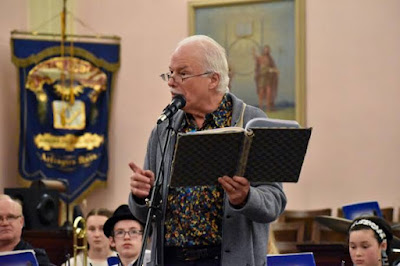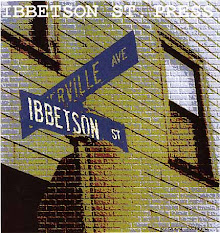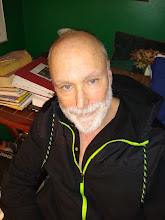The noted poet Martha Collins writes of Ratiner's collection:
Why write about grief? Don't we have enough of that these days? Is there a sort of ugly/beauty about it?
Well, I agree that grief is one of the dominant emotional notes of our time. Personal grief, societal grief. There is a pervasive fear is about the well-being of the planet, the endurance of our democracy, the vitality and diversity of our culture. But that, to my mind, is not a reason to avoid writing about it; perhaps that’s a justification for focusing on that subject, because grieving is one of the central experiences of being human. One of the defining characteristics of being human: from infancy, we want, and then we have; and soon we learn to love what we have, even as the knowledge grows within us that eventually we have to let go of what all that fills our days. That sense of loss needs to be documented, shared, and perhaps even celebrated -- and I think poetry is one of the important experiences where that can take place. I might disagree with you, though -- I wouldn’t call it “an ugly beauty;” I think of it as possessing the dignity of the human experience. I think I tend to subscribe to what the poet Rilke said in describing Rodan’s sculpture, some of which were called ‘ugly’ at the time. I’m paraphrasing, but the poet wrote that ‘something that is true is beautiful, no matter how ugly it might appear to the eye; and something that is false is ugly, no matter how beautiful it might appear to the eye.’ So my hope for the poems in my new collection is that they possess some truth about them, and I trust that will create an experience that is, at the very least, illuminating -- and perhaps, at times, they are even beautiful.
I have always written about food. I find it profound and evocative. And indeed, in your book food ain't chopped liver. I was reading a striking few lines in a poem where you bring a pastrami sandwich to the high holy. Can you talk a bit about this?
Yes, indeed the poem you’re talking about is called “Clockwork;” it’s the opening poem in the first section of the book -- and it’s one of my favorites. It’s largely written about my father, who died when I was very young, at age 8 – though other vignette you mention occurred with my stepfather Jack. The majority of the poems in the collection have autobiographical elements about them – but they are also woven through with the experiences of family members and friends. I think I’ve created a broader sense of we by doing this, and the speaker’s experience becomes more encompassing. Because I was a child, looking back I regret that I was unable to offer much help to him as he faced the most challenging moment of his life: slowly the letting go of the world. Like most children, I was largely oblivious to what was taking place. So here, in this poem, I get to create an imagined world where, as an adult, I am rushing back home to be with my father. Through a series of small vignettes, you follow the speaker heading home -- and all of time seems to play into that journey. In the section that you’ve mentioned, the hospice nurse comes to visit him and asks him what he desires. This experience was one I actually witnessed with my stepfather, Jack. And he jokingly replied: I’d like a hot
pastrami sandwich on rye. But the next day, the nurse appeared with a hot pastrami sandwich. Since he had stomach cancer, he could not eat anything whatsoever -- he was only getting nutrition intravenously. But she said no, it’s not to eat: smell it, chew a bite, and then spit it out in my hand. He did just that – and you could see the tremendous pleasure it gave him. Witnessing this as a young man, I thought it was one of the most generous human acts I’ve ever seen. So, indeed, food has an important place in that poem, as well as others. If you’ll remember, there’s another poem about my mother visiting me, and I describe making corn muffins and coffee, so we could spend the afternoon talking. Food, eating and drinking together -- these simple pleasures of life -- these often end up being some of the most memorable times. It’s not only those grand moments that earn a place in poetry.
In your poem "Ballroom Dancing with the Bestial Dark." the metaphor of dancing with death, and as you put it "I am not death's wallflower." is very striking. The dance isn't a foxtrot, is it? It seems something so visceral, I mean this is not going gently into the night...here you rage, rage, rage!
You’re right to be thinking of that poem by Dylan Thomas – “do not go gentle into that good night.”. “Ballroom Dancing…” is a poem at the end of the first section of my book. This collection is divided into three sections, something like 3 musical movements. The first one centers largely on personal loss; the second one broadens out into familial, communal, societal grief; and the third one explores an attempt to metabolize our grief, to repair our wounds, to transform our emotions into some new experience which can allow us to continue growing. And often these attempts at healing involve writing and art-making, or at least the appreciation of the arts. “Ballroom Dancing...” is the very last poem in section 1, and it’s an attempt at using metaphor to alter my understanding about death and loss. I imagine it here as a dance, an intimate interaction. I am no longer looking at death as a monster, as the young boy certainly did; I am older now and no longer being that “wallflower,” observing from a safe distance. I’m finally willing to embrace its actuality, to participate in the way it is a continual presence as we age, to understand it on new term – perhaps to even find that beauty which we spoke of earlier. We are mortal; we have to surrender to small and great sacrifices – and still we seek to value our living experience, to perhaps cherish it all the more by knowing it to be fleeting.
Your Jewish background is very evident in the collection. Would you ever call yourself a Jewish poet?
No, I don’t think I would call myself a ‘Jewish poet’ only because, to my mind, I didn’t have a really good religious education when I was young. I think of myself as a secular Jew, and certainly embrace my history and traditions. But I suffered a break with my religion, with my childlike conception of God, an abruption triggered by my dad‘s death. It forced me to challenge so much of what I was being taught, the underlying belief system. But clearly the culture and history have stayed with me and do inform some of what appears in my poetry, especially throughout this collection. I think in these poems you see a man wrestling with his early world-view, testing what still feels valuable and what must be jettisoned or transformed. These are questions we all ask from time to time: What do we know? What do we believe? When life really challenges us, where do we find steady ground beneath our feet? And most importantly, how can this understanding help me to accomplish what feels most important to me in my life. I want to savor, to value so many experiences that my father was denied, dying as so young a man.
Now that you are the President of the New England Poetry Club—how do you find time to write?
I had something of a warning from a previous New England Poetry Club president: she felt a bit overwhelmed by the responsibilities and found that she did not write very much for the two years she assumed that leadership position. In fact, it made me hesitant at first to accept this position for that reason -- because writing is integral to my day-to-day experience. I write many times each week – and, in fact, if I go more than a day or two without writing, I feel very antsy, to say the least. So I made a promise to myself that I was not going to surrender all of that writing time – and, as it turns out, it’s not yet dampened my writing spirit. In some ways, maybe it’s even amplified it – because I so appreciate whenever I have an hour to just read, revise, and perhaps write. There’s a good deal of time where I’m attempting to do things to help the club and our members – but also poets more broadly, and the place poetry has in our communal life. I think it’s important to remind people that especially now, in these really challenging times that we’re facing, we’ve always found in poetry in art a place of refuge, a place to be fortified against difficulty, to develop new vision that might enlarge how we see the world, and as an occasion to simply not feel alone. So I do think this is an essential mission, for NEPC and the arts in general. But still it is my responsibility to carve out times in in each day for my own work. I tend to launch into writing first thing in the morning, and often very late at night. But I’ve developed a discipline for the last 60-some odd years: when the first spark of the poem hits, that first phrase or image announcing itself in my mind -- no matter what I’m doing or where I am, I take out my pocket notebook, and I’m going to follow where that poem leads. Many times, it won’t turn out to be a strong poem – but you never know. So when it calls, I respond – no excuses. So I’m aiming at a balance, though I would not say I’ve achieved that as of yet. There are many weeks when I still feel overwhelmed: between the Red Letter project, which you know about -- my poetry blasts that go out to a few thousand readers, featuring a new poets from all across the country, coupled with a brief commentary; and now my work to promote my new book and a brand new website; and of course the diverse projects working with the New England Poetry Club. It’s typically a packed week -- and I hope that, as time goes on, maybe I’ll feel I’ve achieved a little better balance.
Why should we read your book?
It’s hard for a poet to make that claim because, clearly, in its first manifestation, the poems of this book are an essential experience for the man with the pen in hand. But one of the reasons poets do what we do is because we feel our work may offer pleasure, perhaps insight, even to strangers. I do believe this this book has value for others because I have felt the enthusiastic reaction from audiences at readings. I feel that, in many ways, I’m voicing experiences, concerns, visions that many of us likely
share. I’m speaking out loud things that, sometimes in our society, are allowed to go unspoken. There is almost a taboo about sharing our grief, but also our great joy – as if this is reserved only for a few intimate relationships. I don’t think that makes for a particularly healthy world. My poems may be carving out a clearing in the busy work week, within the crowded thoughts of these tumultuous days -- a clearing where we can stop and feel, even for a few moments, what is most essential in our personal, our family, our community lives. This is most certainly a book that accomplished that for me personally -- but I have a hope that, for readers, for my community, others will find pleasure, surprise, and even solace in these poems. At least that that’s my deepest hope.




































